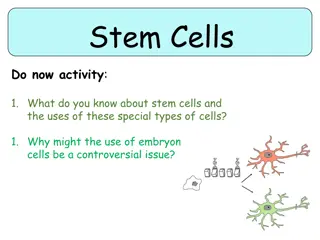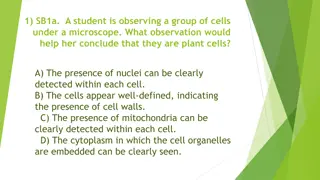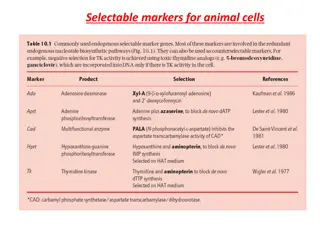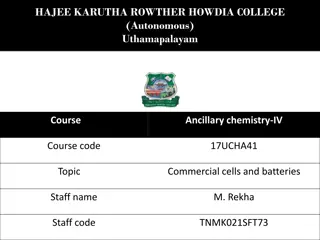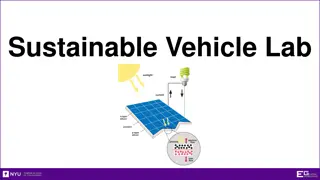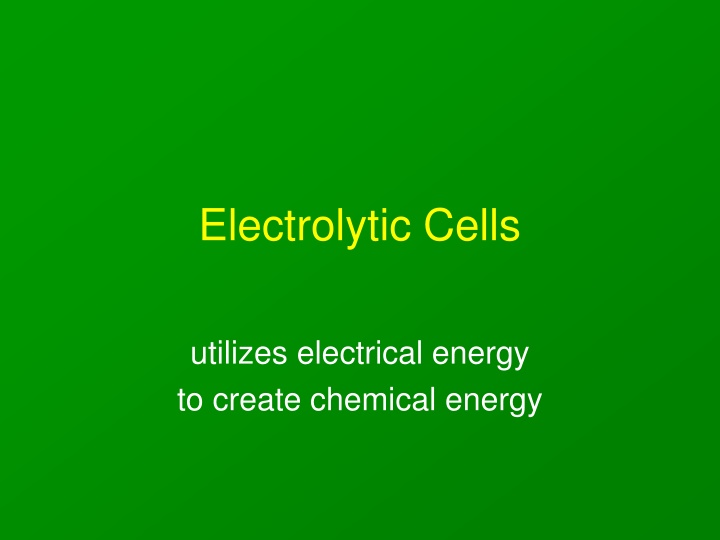
Electrolytic Cells and Galvanic/Voltaic Cells
Discover how electrolytic cells and galvanic/voltaic cells utilize electrical energy to create chemical energy. Understand the differences between spontaneous and non-spontaneous reactions in these cells, and learn about the two types of electrolytic cells - fused salt cells and electroplating cells. Explore the process of electroplating and the importance of electrode polarity in these cells.
Download Presentation

Please find below an Image/Link to download the presentation.
The content on the website is provided AS IS for your information and personal use only. It may not be sold, licensed, or shared on other websites without obtaining consent from the author. If you encounter any issues during the download, it is possible that the publisher has removed the file from their server.
You are allowed to download the files provided on this website for personal or commercial use, subject to the condition that they are used lawfully. All files are the property of their respective owners.
The content on the website is provided AS IS for your information and personal use only. It may not be sold, licensed, or shared on other websites without obtaining consent from the author.
E N D
Presentation Transcript
Electrolytic Cells utilizes electrical energy to create chemical energy
galvanic/Voltaic cell chemical potential energy electrical potential energy electrolytic cell (battery needed) chemical rxns can produce electricity in galvanic/Voltaic cells (spontaneous rxn - exothermic) OR electrical energy used to carry out chemical reactions in electrolytic cell (non-spont rxn - endothermic)
spontaneous reactions: (galvanic/Voltaic cell) non-spontaneous reactions: (electrolytic cell) e- flow: (-) ANODE to (+) CATHODE generates own power produces energy exo anode: higher metal on table J cathode: lower metal on table J e- flow: (+) ANODE to (-) CATHODE needs power source: battery consumes energy endo anode: lower metal on table J cathode: higher metal on table J
two types of electrolytic cells 1. fused salt cells used to purify metals (fused means melted!) 2. electroplating cells designed to cover a surface with metal so will have specific properties
Electroplating electroplating: putting one metal on top of another (anode) onto object (cathode) to be plated solution contains ions (Cu+2) of element (Cu) to be plated move desired coating
An Ox ate a Red Cat anode: electrode at which oxidation occurs cathode: electrode at which reduction occurs electrode polarity opposite than galvanic cell! anode is POSITIVE cathode is NEGATIVE
A POX on Electrolytic Cells Anode Positive Oxidation electrolytic cell: polarity determined by outside power supply anode is attached to (+) terminal cathode is attached to (-) terminal
Can Cu be plated onto Al? Al above Cu in Table J reaction will nothappen spontaneously so external energy source (power supply or battery) needed to force reaction to occur (plating Cu on Al) cathode (-): object to be plated (must be more reactive than anode higher on table J) anode (+): made of metal want to plate on object (must be less reactive than cathode lower on table J) solution: contains ions of metal to be plated (anode)
(+) (-) Battery anode: where oxidation happens (+) Cu Cu+2 + 2e- (-) cathode: obj being plated (Al) - where reduction happens Cu(s) Cu+2 Cu+2 + 2e- Cu SO4-2 Note: just moving Cu around
In summation: electrolytic cells: galvanic or Voltaic cells: use spontaneous SR rxn to produce flow of electrons (electricity) use flow of electrons (electricity) to force non-spontaneous rxn to occur endothermic electrons flow from anode (oxidized substance) to cathode (reduced substance) exothermic electrons flow from anode (oxidized substance) to cathode (reduced substance)










